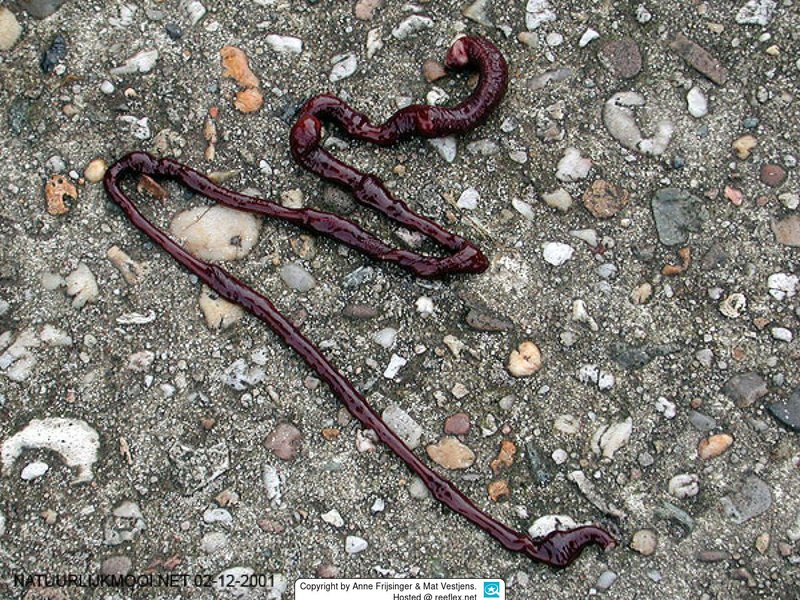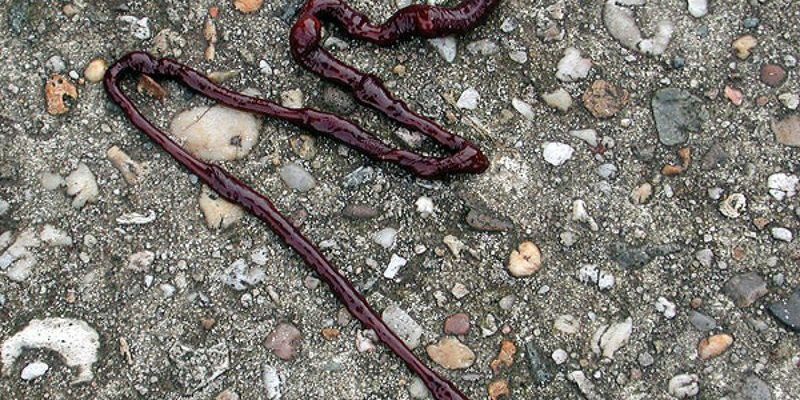
Imagine you’re at a natural history museum, gazing at an exhibit that showcases all the wonders of the ocean. Instead of a standard presentation of fish and crustaceans, there’s a section dedicated to these oddly captivating worms. The bootlace worm, with its eye-catching colors and impressive length, is a true showstopper, while the ribbon worm, with its elegant shape and ability to snap at prey like a rubber band, adds a flair of drama to the exhibit. You might find yourself wondering how they live, what they eat, and how they differ from one another. Well, grab that coffee and let’s get started!
What Are Bootlace Worms?
Bootlace worms, or *Lineus longissimus*, are famous for their incredible length. In fact, they’re known as some of the longest animals on earth—some can stretch up to 30 meters! They primarily inhabit the shores of the Atlantic Ocean, often hiding in the sand or mud. Their appearance is striking, with a color palette that features bright yellows, greens, and browns, making them quite a sight to behold.
These worms are part of the *Nemertea* phylum, which includes animals commonly known as ribbon worms. You might hear the term “bootlace” because of their long, thin, and flexible bodies, resembling shoelaces. Interestingly, while they might look harmless, they possess a unique harpoon-like structure called a proboscis that they can use to catch prey. So, while they might seem like a fun creature to observe, they’re not just a pretty face!
Habitat and Behavior
Bootlace worms usually prefer shallow marine environments, where they can burrow into sediment or hide among algae and seaweed. They are surprisingly rare to spot, even though they are widespread. These worms often slither around, searching for food, which mainly consists of small invertebrates and organic debris.
What’s really interesting is their capacity for regeneration. If a bootlace worm loses part of its body, it can regrow it! This ability helps them survive in harsh environments, making them resilient creatures in the grand scheme of marine life.
What Are Ribbon Worms?
Now, let’s talk about ribbon worms, also part of the *Nemertea* phylum. Unlike bootlace worms, ribbon worms are characterized by their flat, ribbon-like appearance. They can be found in both marine and freshwater environments, and their sizes can vary quite a bit, from just a few centimeters to several meters long.
Ribbon worms also have a proboscis, which is a common feature among nemerteans. This unique adaptation allows them to capture prey quickly and efficiently. They’re often colorful, too, with shades ranging from deep reds and purples to greens and browns, making them visually appealing.
Habitat and Behavior
These worms are quite versatile and can adapt to various habitats. They thrive in both marine and freshwater environments, often seen in tidal pools, shallow waters, or even marshes. Their diet mainly consists of small crustaceans and other soft-bodied invertebrates.
Ribbon worms also exhibit fascinating behavior. Many species can instantly retract into the substrate when threatened, offering a clever escape route. Plus, they share the remarkable ability to regenerate lost body parts, much like their bootlace cousins!
Comparative Anatomy
When comparing bootlace worms to ribbon worms, it’s essential to look at their physical characteristics. Bootlace worms have long, thin bodies, often appearing more like a string than a traditional worm. Their impressive length can make them tough to spot fully; you might only see part of them peeking out from the sand.
On the other hand, ribbon worms typically have a flatter, more ribbon-like shape. This gives them an elegant look, and their body can also change color based on their surroundings. Both types of worms can display vivid colors, aiding in camouflage or warning potential predators.
Another significant difference lies in their size. Bootlace worms can be astonishingly long, while ribbon worms usually stay shorter and more compact. This size difference can make identifying them easier in the wild.
Feeding Habits
Feeding strategies also differentiate these two types of worms. Bootlace worms use their proboscis to hunt, latching onto prey like a harpoon and pulling them in. They feast mainly on small invertebrates, and this predatory method allows them to capture food quickly.
Ribbon worms, with their similar proboscis, can also snatch up prey swiftly. However, they tend to focus more on scavenging than active hunting. They can consume a variety of organisms, including detritus and small crustaceans, adapting their feeding habits based on available food sources.
It’s interesting to note how their different hunting methods reflect their environments. Bootlace worms may blend into the sandy seabed, waiting to ambush prey, while ribbon worms often exhibit more dynamic movement, darting around to find food.
Reproduction and Lifespan
Both bootlace and ribbon worms have fascinating reproductive strategies. Many species reproduce through external fertilization, where eggs and sperm are released into the water, mixing and hopefully creating new life. Some bootlace worms can also reproduce asexually, fragmenting their bodies to form new individuals.
As for their lifespans, both types of worms can live for several years. However, environmental factors such as food availability and habitat conditions significantly affect their longevity. With the right conditions, these worms can thrive, showcasing their resilience and adaptability.
The Ecological Importance of Both Species
Bootlace worms and ribbon worms are crucial to aquatic ecosystems. They help break down organic material, contributing to nutrient cycling. As they feed on small invertebrates and detritus, they play a part in maintaining a balanced food web.
Moreover, both types of worms serve as food for various marine animals. Birds, fish, and other creatures rely on them as a vital food source, highlighting their role in the ecosystem. Without these worms, the health of marine environments could be compromised.
Bootlace worms and ribbon worms might seem similar on the surface—both share the same phylum and possess that fascinating proboscis. Yet, they each have distinct characteristics that make them unique. From their physical appearance and feeding habits to their reproductive strategies and ecological roles, these worms add a rich tapestry to our understanding of marine life.
So, the next time you think of worms, remember bootlace and ribbon worms. They’re not just squirmy little creatures; they’re complex beings that contribute significantly to our ecosystems. Embracing the diversity in the animal kingdom is essential, and these two types of worms are perfect examples of nature’s wonders!

